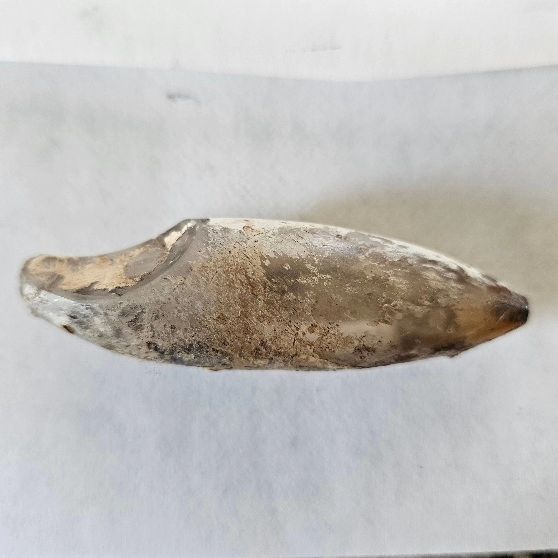- Welcome to FinsandFur.net Forums.
Recent posts
#11
The Tailgate / Today in history 4-22
Last post by remrogers - April 22, 2024, 10:43:19 AM1889
April 22
The Oklahoma land rush begins
At precisely high noon, thousands of would-be settlers make a mad dash into the newly opened Oklahoma Territory to claim cheap land.
The nearly two million acres of land opened up to white settlement was located in Indian Territory, a large area that once encompassed much of modern-day Oklahoma. Initially considered unsuitable for white colonization, Indian Territory was thought to be an ideal place to relocate Native Americans who were removed from their traditional lands to make way for white settlement. The relocations began in 1817, and by the 1880s, Indian Territory was a new home to a variety of tribes, including the Chickasaw, Choctaw, Cherokee, Creek, Cheyenne, Commanche and Apache.
By the 1890s, improved agricultural and ranching techniques led some white Americans to realize that the Indian Territory land could be valuable, and they pressured the U.S. government to allow white settlement in the region. In 1889, President Benjamin Harrison agreed, making the first of a long series of authorizations that eventually removed most of Indian Territory from Indian control.
To begin the process of white settlement, Harrison chose to open a 1.9 million-acre section of Indian Territory that the government had never assigned to any specific tribe. However, subsequent openings of sections that were designated to specific tribes were achieved primarily through the Dawes Severalty Act (1887), which allowed whites to settle large swaths of land that had previously been designated to specific Indian tribes.
On March 3, 1889, Harrison announced the government would open the 1.9 million-acre tract of Indian Territory for settlement precisely at noon on April 22. Anyone could join the race for the land, but no one was supposed to jump the gun. With only seven weeks to prepare, land-hungry Americans quickly began to gather around the borders of the irregular rectangle of territory. Referred to as "Boomers," by the appointed day more than 50,000 hopefuls were living in tent cities on all four sides of the territory.
The events that day at Fort Reno on the western border were typical. At 11:50 a.m., soldiers called for everyone to form a line. When the hands of the clock reached noon, the cannon of the fort boomed, and the soldiers signaled the settlers to start. With the crack of hundreds of whips, thousands of Boomers streamed into the territory in wagons, on horseback, and on foot. All told, from 50,000 to 60,000 settlers entered the territory that day. By nightfall, they had staked thousands of claims either on town lots or quarter section farm plots. Towns like Norman, Oklahoma City, Kingfisher, and Guthrie sprang into being almost overnight.
An extraordinary display of the American settler lust for land, the first Oklahoma land rush was also plagued by greed and fraud. Cases involving "Sooners"–people who had entered the territory before the legal date and time–overloaded courts for years to come. The government attempted to operate subsequent runs with more controls, eventually adopting a lottery system to designate claims. By 1905, white Americans owned most of the land in Indian Territory. Two years later, the area once known as Indian Territory entered the Union as a part of the new state of Oklahoma.
April 22
The Oklahoma land rush begins
At precisely high noon, thousands of would-be settlers make a mad dash into the newly opened Oklahoma Territory to claim cheap land.
The nearly two million acres of land opened up to white settlement was located in Indian Territory, a large area that once encompassed much of modern-day Oklahoma. Initially considered unsuitable for white colonization, Indian Territory was thought to be an ideal place to relocate Native Americans who were removed from their traditional lands to make way for white settlement. The relocations began in 1817, and by the 1880s, Indian Territory was a new home to a variety of tribes, including the Chickasaw, Choctaw, Cherokee, Creek, Cheyenne, Commanche and Apache.
By the 1890s, improved agricultural and ranching techniques led some white Americans to realize that the Indian Territory land could be valuable, and they pressured the U.S. government to allow white settlement in the region. In 1889, President Benjamin Harrison agreed, making the first of a long series of authorizations that eventually removed most of Indian Territory from Indian control.
To begin the process of white settlement, Harrison chose to open a 1.9 million-acre section of Indian Territory that the government had never assigned to any specific tribe. However, subsequent openings of sections that were designated to specific tribes were achieved primarily through the Dawes Severalty Act (1887), which allowed whites to settle large swaths of land that had previously been designated to specific Indian tribes.
On March 3, 1889, Harrison announced the government would open the 1.9 million-acre tract of Indian Territory for settlement precisely at noon on April 22. Anyone could join the race for the land, but no one was supposed to jump the gun. With only seven weeks to prepare, land-hungry Americans quickly began to gather around the borders of the irregular rectangle of territory. Referred to as "Boomers," by the appointed day more than 50,000 hopefuls were living in tent cities on all four sides of the territory.
The events that day at Fort Reno on the western border were typical. At 11:50 a.m., soldiers called for everyone to form a line. When the hands of the clock reached noon, the cannon of the fort boomed, and the soldiers signaled the settlers to start. With the crack of hundreds of whips, thousands of Boomers streamed into the territory in wagons, on horseback, and on foot. All told, from 50,000 to 60,000 settlers entered the territory that day. By nightfall, they had staked thousands of claims either on town lots or quarter section farm plots. Towns like Norman, Oklahoma City, Kingfisher, and Guthrie sprang into being almost overnight.
An extraordinary display of the American settler lust for land, the first Oklahoma land rush was also plagued by greed and fraud. Cases involving "Sooners"–people who had entered the territory before the legal date and time–overloaded courts for years to come. The government attempted to operate subsequent runs with more controls, eventually adopting a lottery system to designate claims. By 1905, white Americans owned most of the land in Indian Territory. Two years later, the area once known as Indian Territory entered the Union as a part of the new state of Oklahoma.
#12
Fishing Equipment / Re: Look what I found
Last post by Okanagan - April 22, 2024, 09:25:20 AMThat is major cool!!
#13
Fishing Equipment / Re: Look what I found
Last post by Hawks Feather - April 22, 2024, 08:20:00 AMYou have a good eye for spotting that one.
#14
Fishing Equipment / Re: Look what I found
Last post by nastygunz - April 22, 2024, 06:50:43 AMI bet that old warrior could tell some tales!
#15
Fishing Photos / Re: Fish on!
Last post by FinsnFur - April 21, 2024, 10:15:38 PMNice Rainbows 
It's a triple rainbow!!

Those are going to be soooo delicious.
What are you going do? Smoke em? Bake em? Cedar plank em?

It's a triple rainbow!!


Those are going to be soooo delicious.
What are you going do? Smoke em? Bake em? Cedar plank em?
#16
Fishing Equipment / Look what I found
Last post by FinsnFur - April 21, 2024, 10:05:08 PM Found her tangled up in some shore debris.

I knew what it was as soon as I seen it but I wasn't sure how old it is.
It's a vintage Heddon fishing lure body.
After doing some research on this one. I'm thinking it's the Heddon River Runt Spook.
According to Heddon they started making these things in 1929 and they were wood. In 1933 they switched to plastic.
I looked through Heddon's online vintage images to see if I could find out more on this one and the only one I can find with a white nose is the one pictured below. Mine does have some fish scale print on the belly like the image also.

If that is the one, I'm guessing maybe around the 1946 era. ...based on the info I'm finding from Heddon.
...based on the info I'm finding from Heddon.
What ever the age is on it, it's pretty dang old to have every single piece of metal rusted completed off of it.

I knew what it was as soon as I seen it but I wasn't sure how old it is.
It's a vintage Heddon fishing lure body.
After doing some research on this one. I'm thinking it's the Heddon River Runt Spook.
According to Heddon they started making these things in 1929 and they were wood. In 1933 they switched to plastic.
I looked through Heddon's online vintage images to see if I could find out more on this one and the only one I can find with a white nose is the one pictured below. Mine does have some fish scale print on the belly like the image also.

If that is the one, I'm guessing maybe around the 1946 era.
 ...based on the info I'm finding from Heddon.
...based on the info I'm finding from Heddon.What ever the age is on it, it's pretty dang old to have every single piece of metal rusted completed off of it.
#17
Fishing Photos / Re: Fish on!
Last post by nastygunz - April 21, 2024, 07:39:34 PMFelt good after a lonnnnnnnnng winter 

#18
Fishing Photos / Re: Fish on!
Last post by Hawks Feather - April 21, 2024, 07:12:14 PMCongratulations!
#19
Fishing Photos / Fish on!
Last post by nastygunz - April 21, 2024, 06:41:36 PM #20
The Tailgate / Today in history 4-21
Last post by remrogers - April 21, 2024, 10:11:00 AM753 B.C.
April 21
Rome founded
According to tradition, on April 21, 753 B.C., Romulus and his twin brother, Remus, found Rome on the site where they were suckled by a she-wolf as orphaned infants. Actually, the Romulus and Remus myth originated sometime in the fourth century B.C., and the exact date of Rome's founding was set by the Roman scholar Marcus Terentius Varro in the first century B.C.
According to the legend, Romulus and Remus were the sons of Rhea Silvia, the daughter of King Numitor of Alba Longa. Alba Longa was a mythical city located in the Alban Hills southeast of what would become Rome. Before the birth of the twins, Numitor was deposed by his younger brother Amulius, who forced Rhea to become a vestal virgin so that she would not give birth to rival claimants to his title. However, Rhea was impregnated by the war god Mars and gave birth to Romulus and Remus. Amulius ordered the infants drowned in the Tiber, but they survived and washed ashore at the foot of the Palatine hill, where they were suckled by a she-wolf until they were found by the shepherd Faustulus.
Reared by Faustulus and his wife, the twins later became leaders of a band of young shepherd warriors. After learning their true identity, they attacked Alba Longa, killed the wicked Amulius, and restored their grandfather to the throne. The twins then decided to found a town on the site where they had been saved as infants. They soon became involved in a petty quarrel, however, and Remus was slain by his brother. Romulus then became ruler of the settlement, which was named "Rome" after him.
To populate his town, Romulus offered asylum to fugitives and exiles. Rome lacked women, however, so Romulus invited the neighboring Sabines to a festival and abducted their women. A war then ensued, but the Sabine women intervened to prevent the Sabine men from seizing Rome. A peace treaty was drawn up, and the communities merged under the joint rule of Romulus and the Sabine king, Titus Tatius. Tatius' early death, perhaps perpetrated by Romulus, left the Roman as the sole king again. After a long and successful rule, Romulus died under obscure circumstances. Many Romans believed he was changed into a god and worshipped him as the deity Quirinus. After Romulus, there were six more kings of Rome, the last three believed to be Etruscans. Around 509 B.C., the Roman republic was established.
Another Roman foundation legend, which has its origins in ancient Greece, tells of how the mythical Trojan Aeneas founded Lavinium and started a dynasty that would lead to the birth of Romulus and Remus several centuries later. In the Iliad, an epic Greek poem probably composed by Homer in the eighth century B.C., Aeneas was the only major Trojan hero to survive the Greek destruction of Troy. A passage told of how he and his descendants would rule the Trojans, but since there was no record of any such dynasty in Troy, Greek scholars proposed that Aeneas and his followers relocated.
In the fifth century B.C., a few Greek historians speculated that Aeneas settled at Rome, which was then still a small city-state. In the fourth century B.C., Rome began to expand within the Italian peninsula, and Romans, coming into greater contact with the Greeks, embraced the suggestion that Aeneas had a role in the foundation of their great city. In the first century B.C., the Roman poet Virgil developed the Aeneas myth in his epic poem the Aeneid, which told of Aeneas' journey to Rome. Augustus, the first Roman emperor and emperor during Virgil's time, and Julius Caesar, his great-uncle and predecessor as Roman ruler, were said to be descended from Aeneas.
April 21
Rome founded
According to tradition, on April 21, 753 B.C., Romulus and his twin brother, Remus, found Rome on the site where they were suckled by a she-wolf as orphaned infants. Actually, the Romulus and Remus myth originated sometime in the fourth century B.C., and the exact date of Rome's founding was set by the Roman scholar Marcus Terentius Varro in the first century B.C.
According to the legend, Romulus and Remus were the sons of Rhea Silvia, the daughter of King Numitor of Alba Longa. Alba Longa was a mythical city located in the Alban Hills southeast of what would become Rome. Before the birth of the twins, Numitor was deposed by his younger brother Amulius, who forced Rhea to become a vestal virgin so that she would not give birth to rival claimants to his title. However, Rhea was impregnated by the war god Mars and gave birth to Romulus and Remus. Amulius ordered the infants drowned in the Tiber, but they survived and washed ashore at the foot of the Palatine hill, where they were suckled by a she-wolf until they were found by the shepherd Faustulus.
Reared by Faustulus and his wife, the twins later became leaders of a band of young shepherd warriors. After learning their true identity, they attacked Alba Longa, killed the wicked Amulius, and restored their grandfather to the throne. The twins then decided to found a town on the site where they had been saved as infants. They soon became involved in a petty quarrel, however, and Remus was slain by his brother. Romulus then became ruler of the settlement, which was named "Rome" after him.
To populate his town, Romulus offered asylum to fugitives and exiles. Rome lacked women, however, so Romulus invited the neighboring Sabines to a festival and abducted their women. A war then ensued, but the Sabine women intervened to prevent the Sabine men from seizing Rome. A peace treaty was drawn up, and the communities merged under the joint rule of Romulus and the Sabine king, Titus Tatius. Tatius' early death, perhaps perpetrated by Romulus, left the Roman as the sole king again. After a long and successful rule, Romulus died under obscure circumstances. Many Romans believed he was changed into a god and worshipped him as the deity Quirinus. After Romulus, there were six more kings of Rome, the last three believed to be Etruscans. Around 509 B.C., the Roman republic was established.
Another Roman foundation legend, which has its origins in ancient Greece, tells of how the mythical Trojan Aeneas founded Lavinium and started a dynasty that would lead to the birth of Romulus and Remus several centuries later. In the Iliad, an epic Greek poem probably composed by Homer in the eighth century B.C., Aeneas was the only major Trojan hero to survive the Greek destruction of Troy. A passage told of how he and his descendants would rule the Trojans, but since there was no record of any such dynasty in Troy, Greek scholars proposed that Aeneas and his followers relocated.
In the fifth century B.C., a few Greek historians speculated that Aeneas settled at Rome, which was then still a small city-state. In the fourth century B.C., Rome began to expand within the Italian peninsula, and Romans, coming into greater contact with the Greeks, embraced the suggestion that Aeneas had a role in the foundation of their great city. In the first century B.C., the Roman poet Virgil developed the Aeneas myth in his epic poem the Aeneid, which told of Aeneas' journey to Rome. Augustus, the first Roman emperor and emperor during Virgil's time, and Julius Caesar, his great-uncle and predecessor as Roman ruler, were said to be descended from Aeneas.

